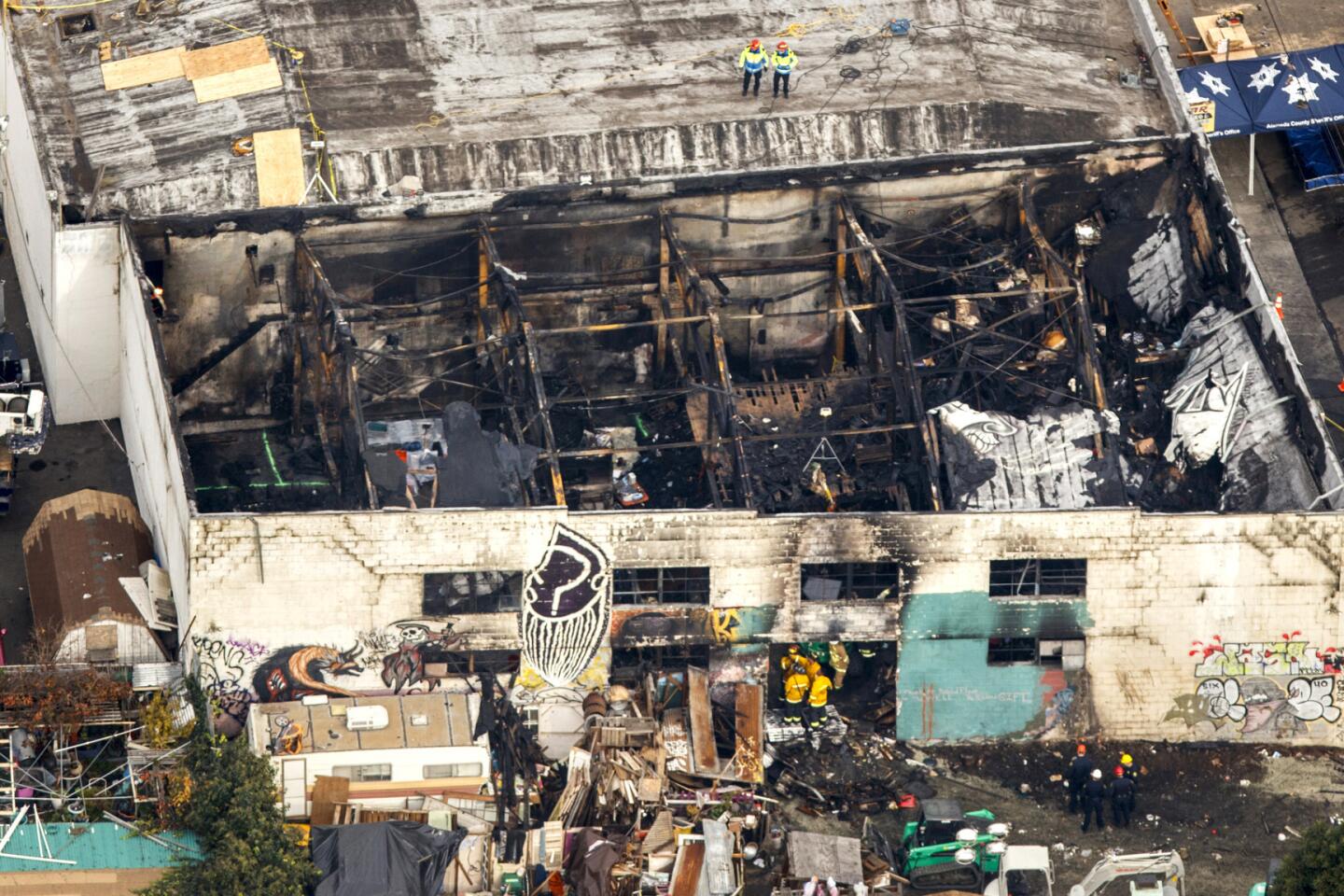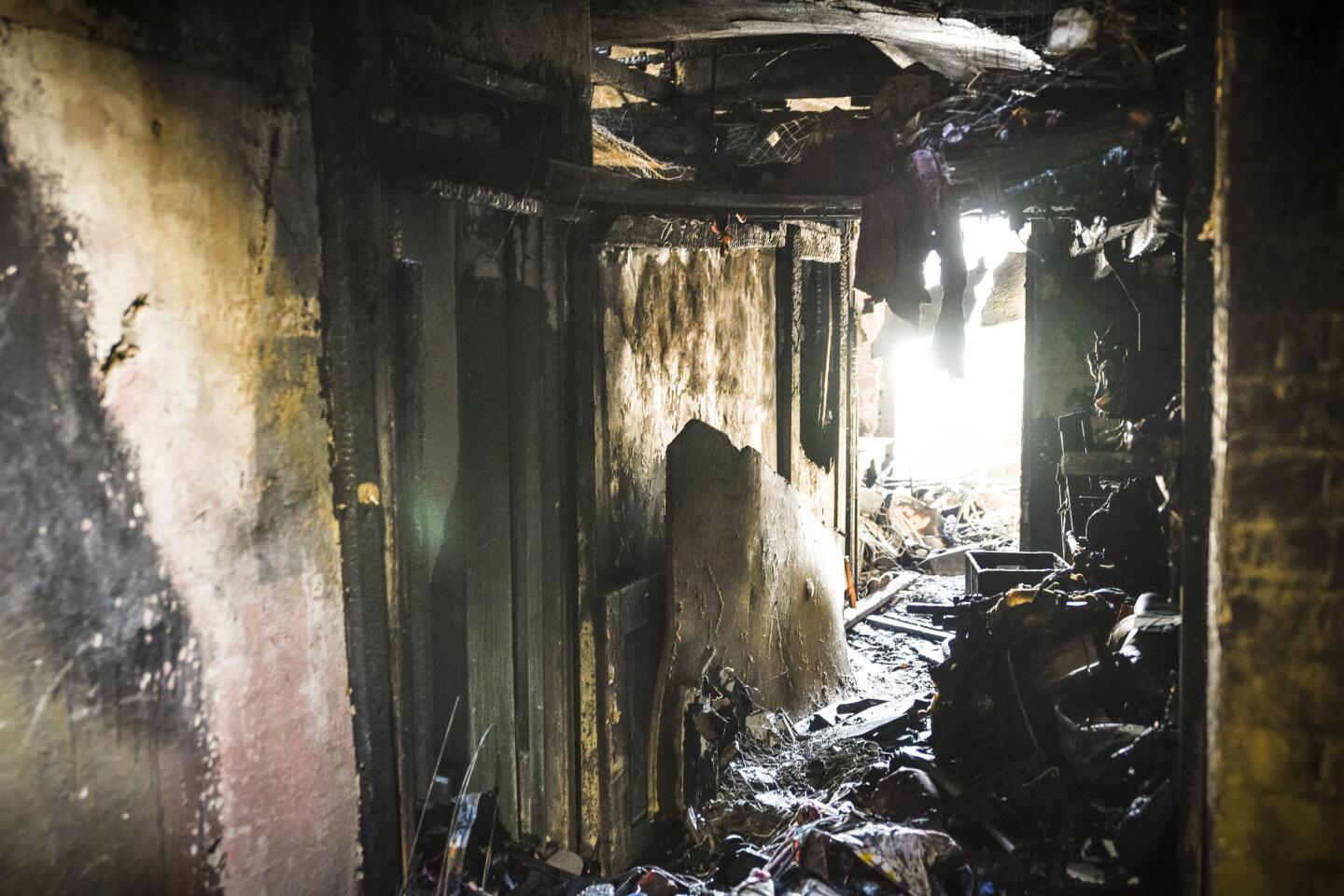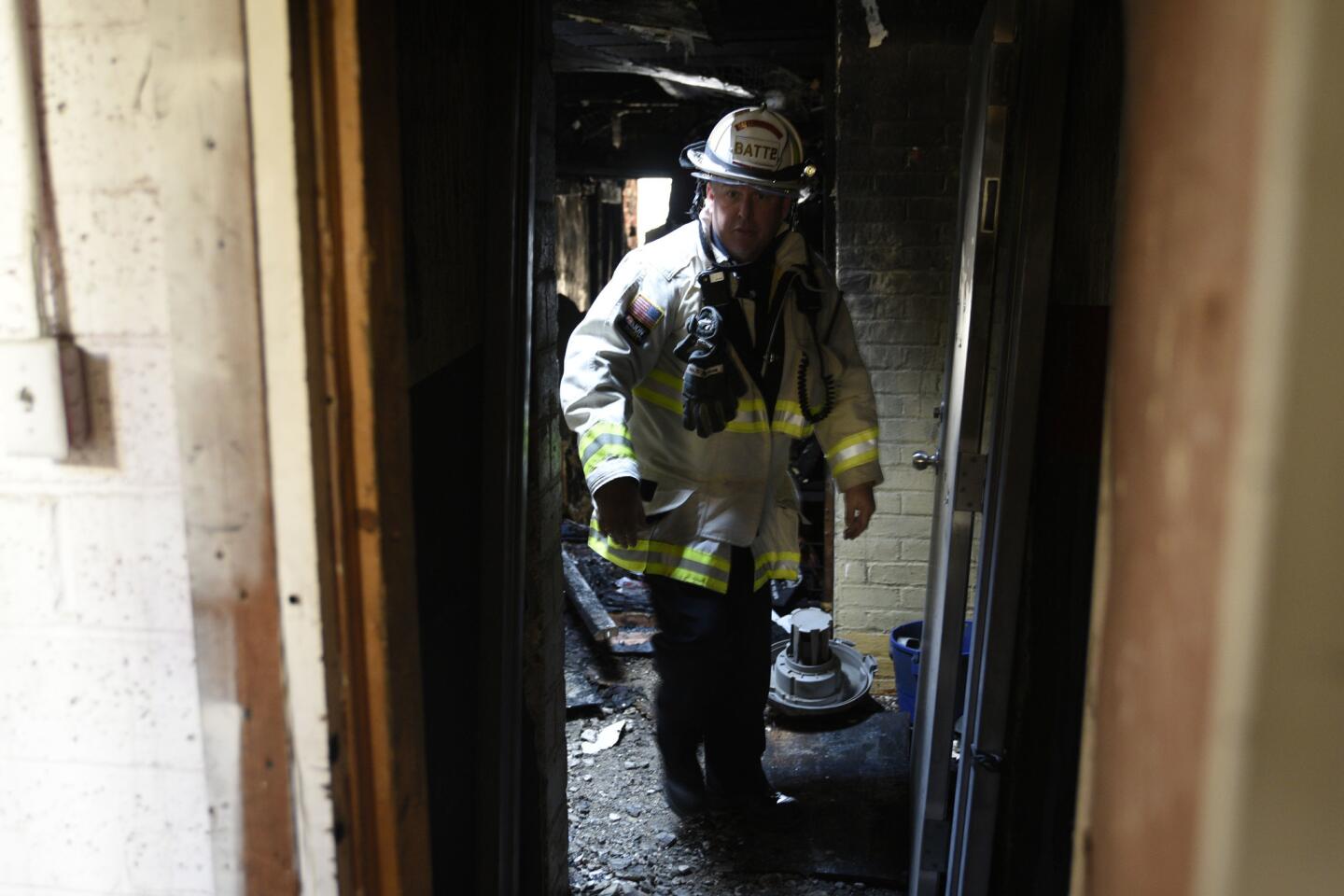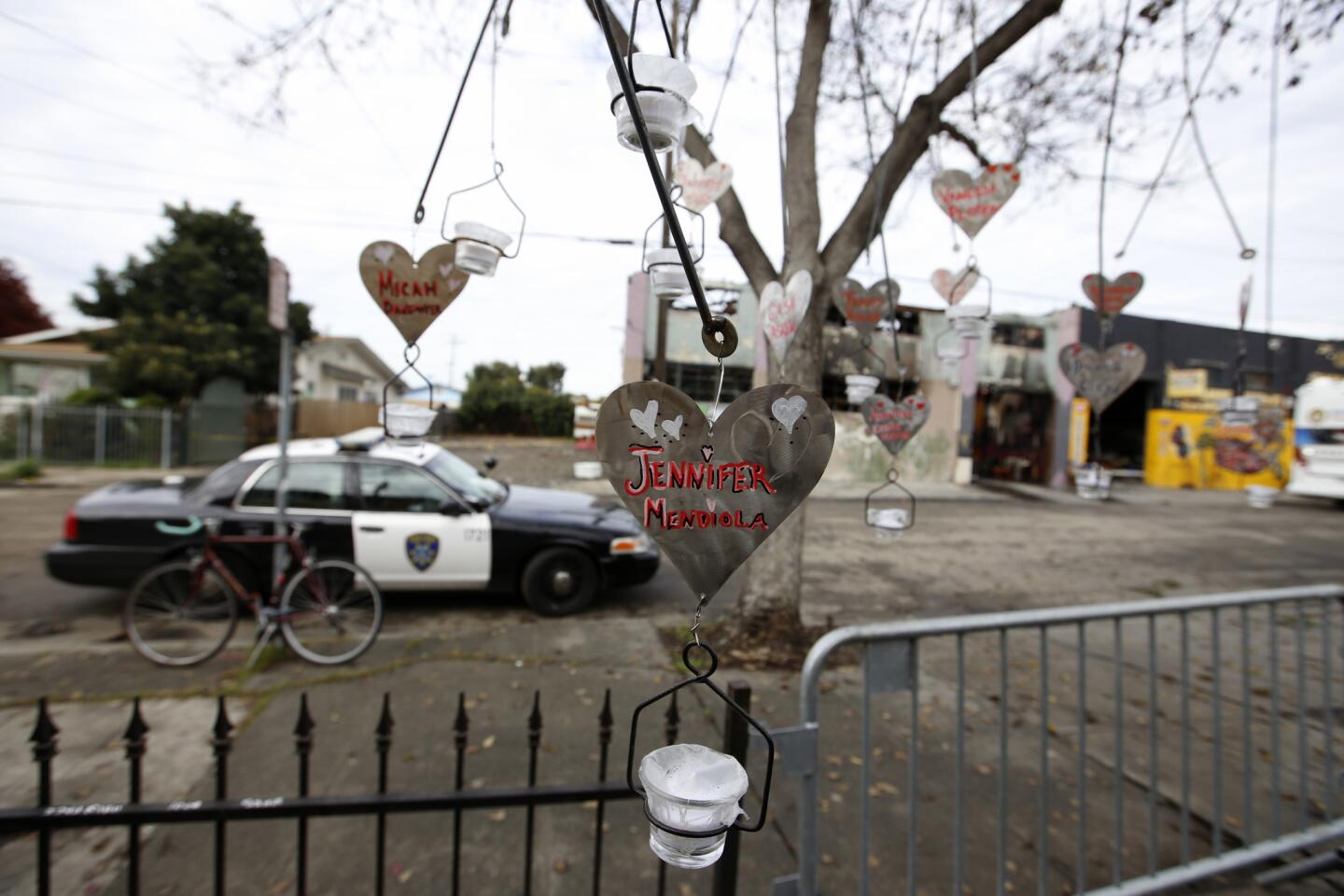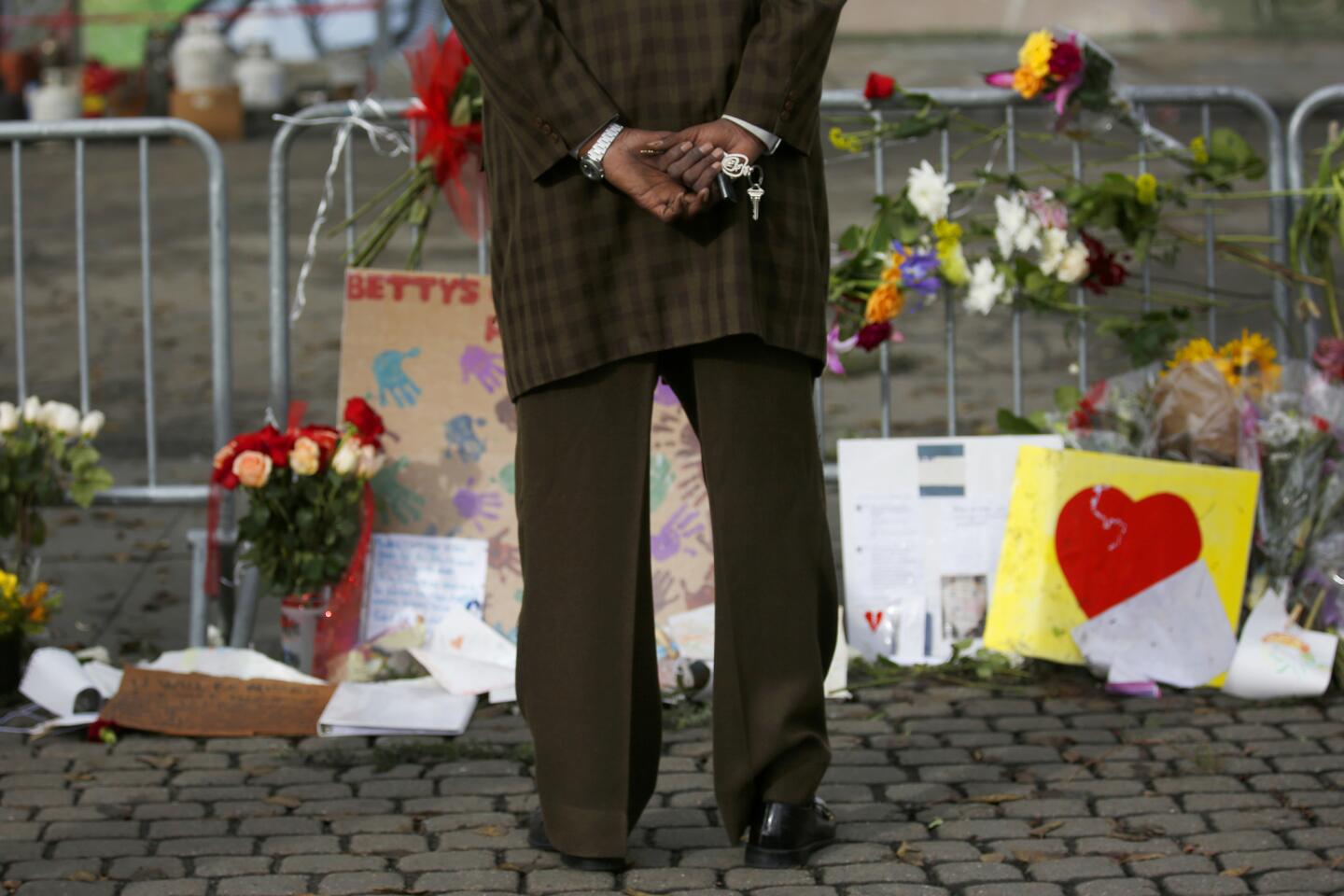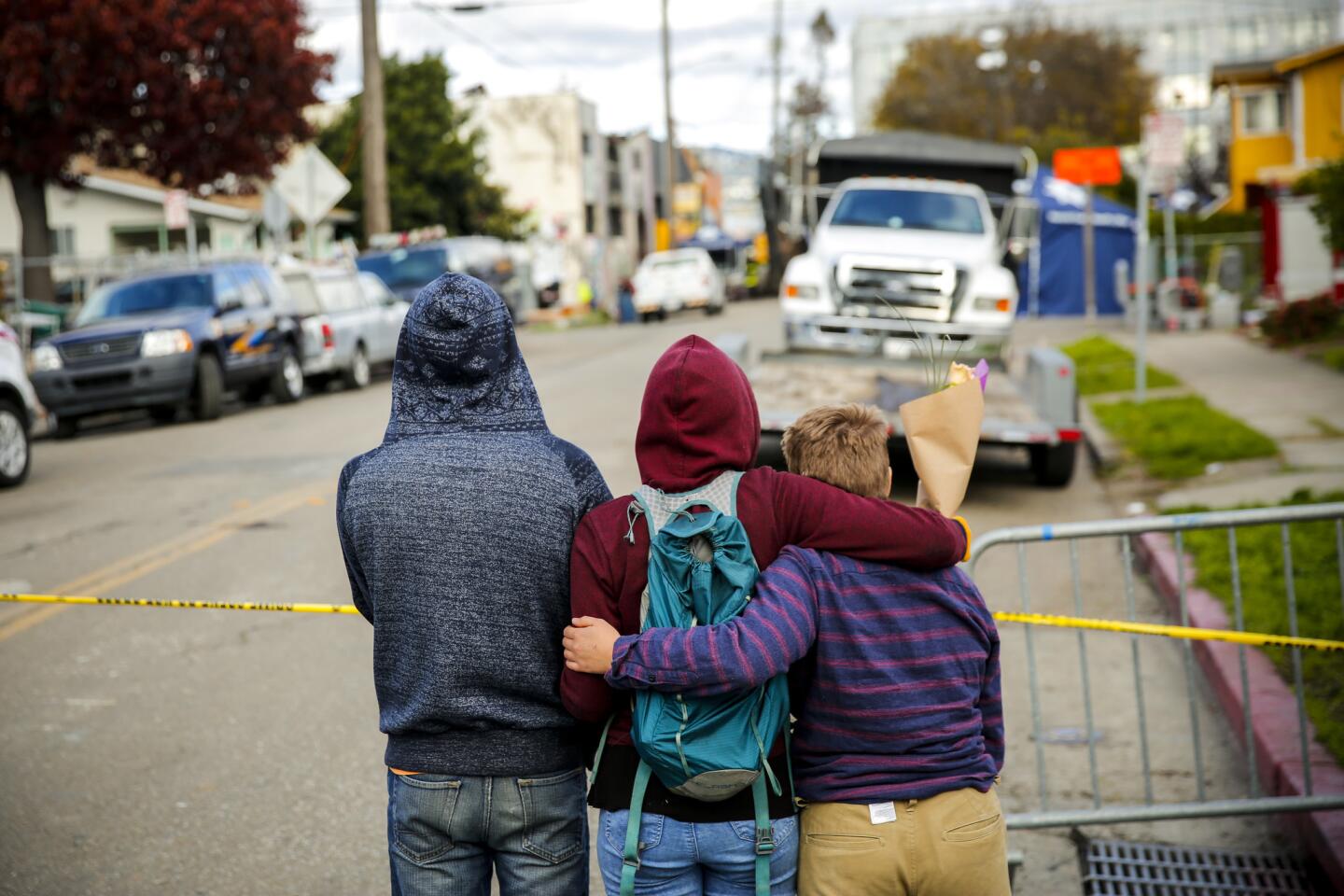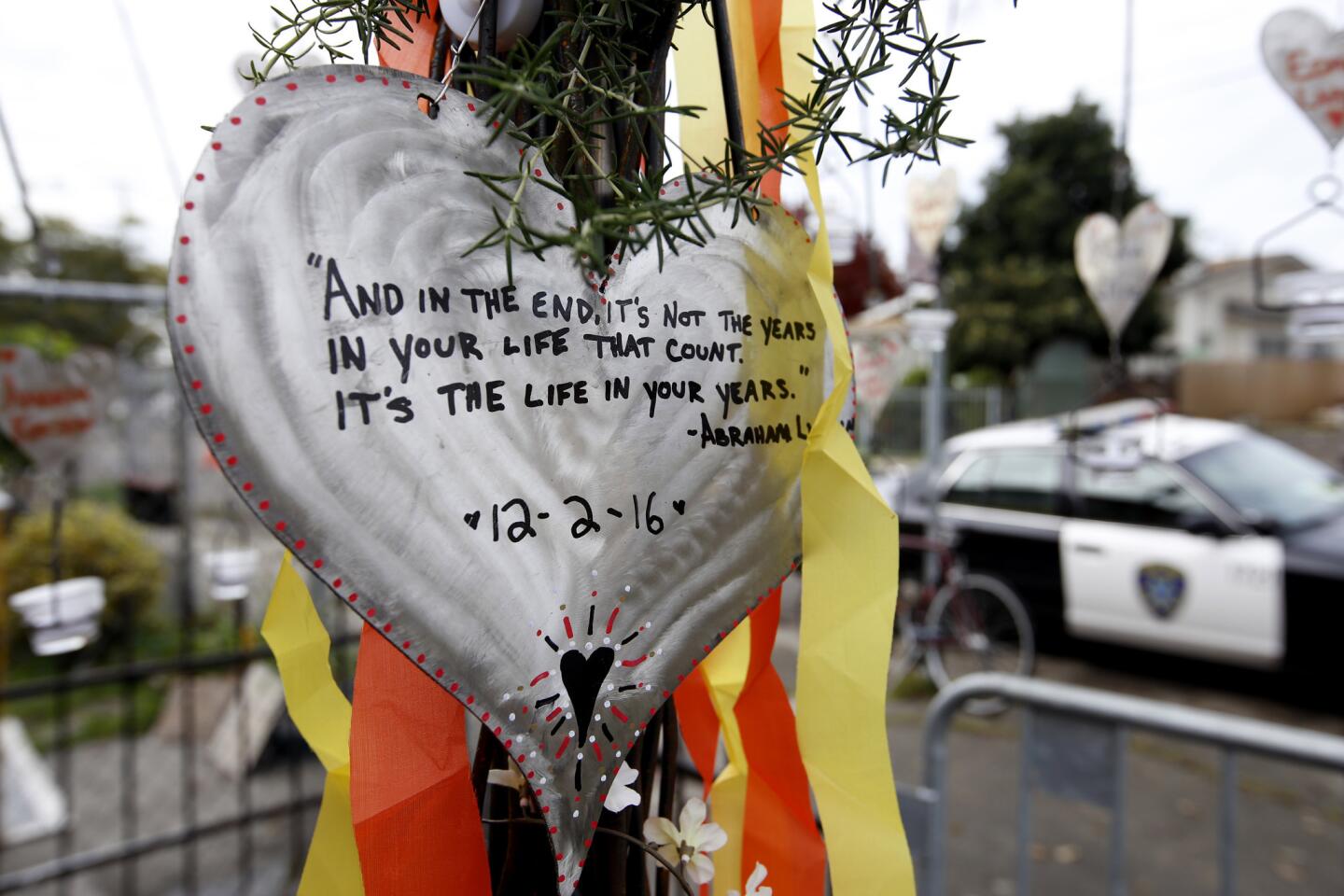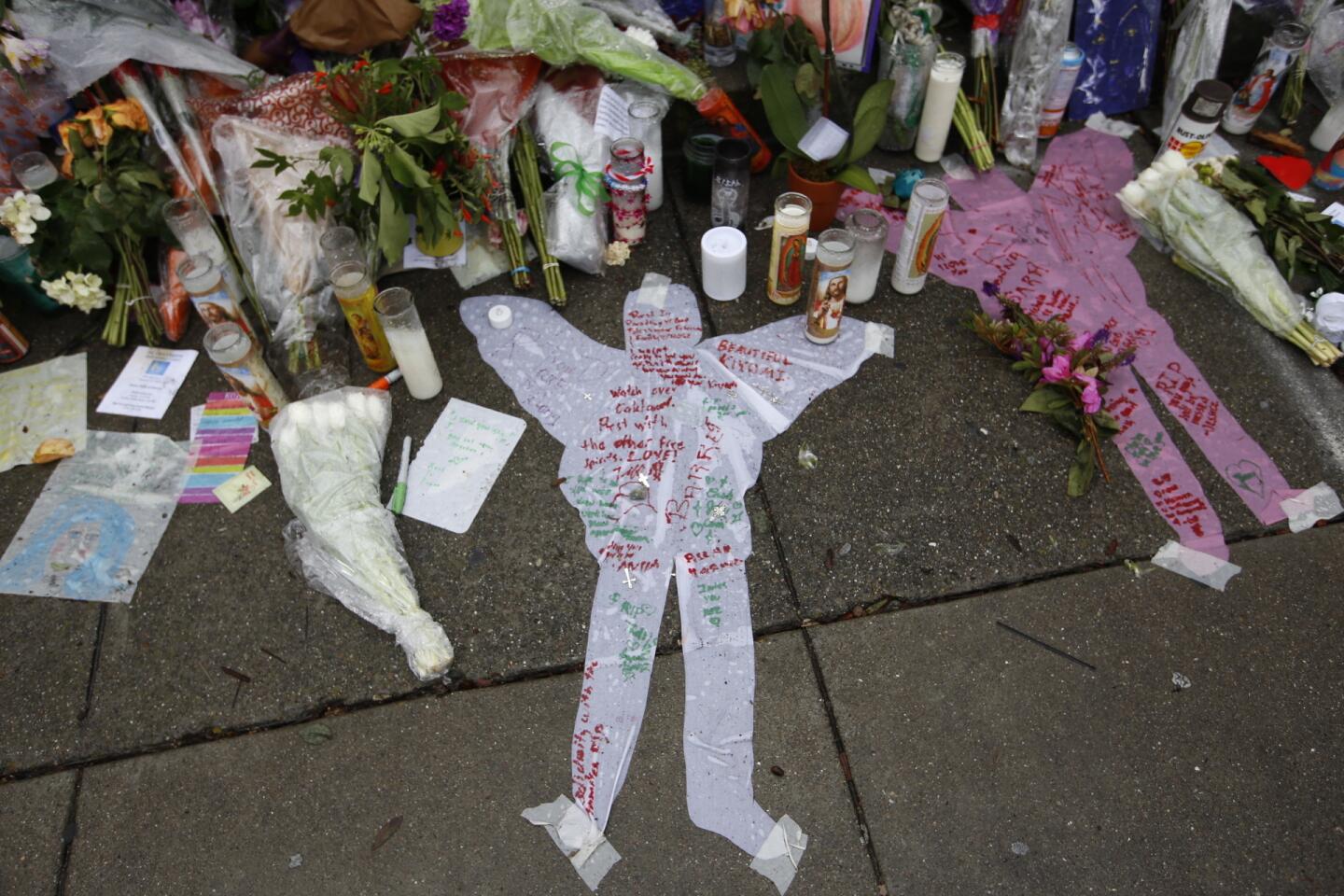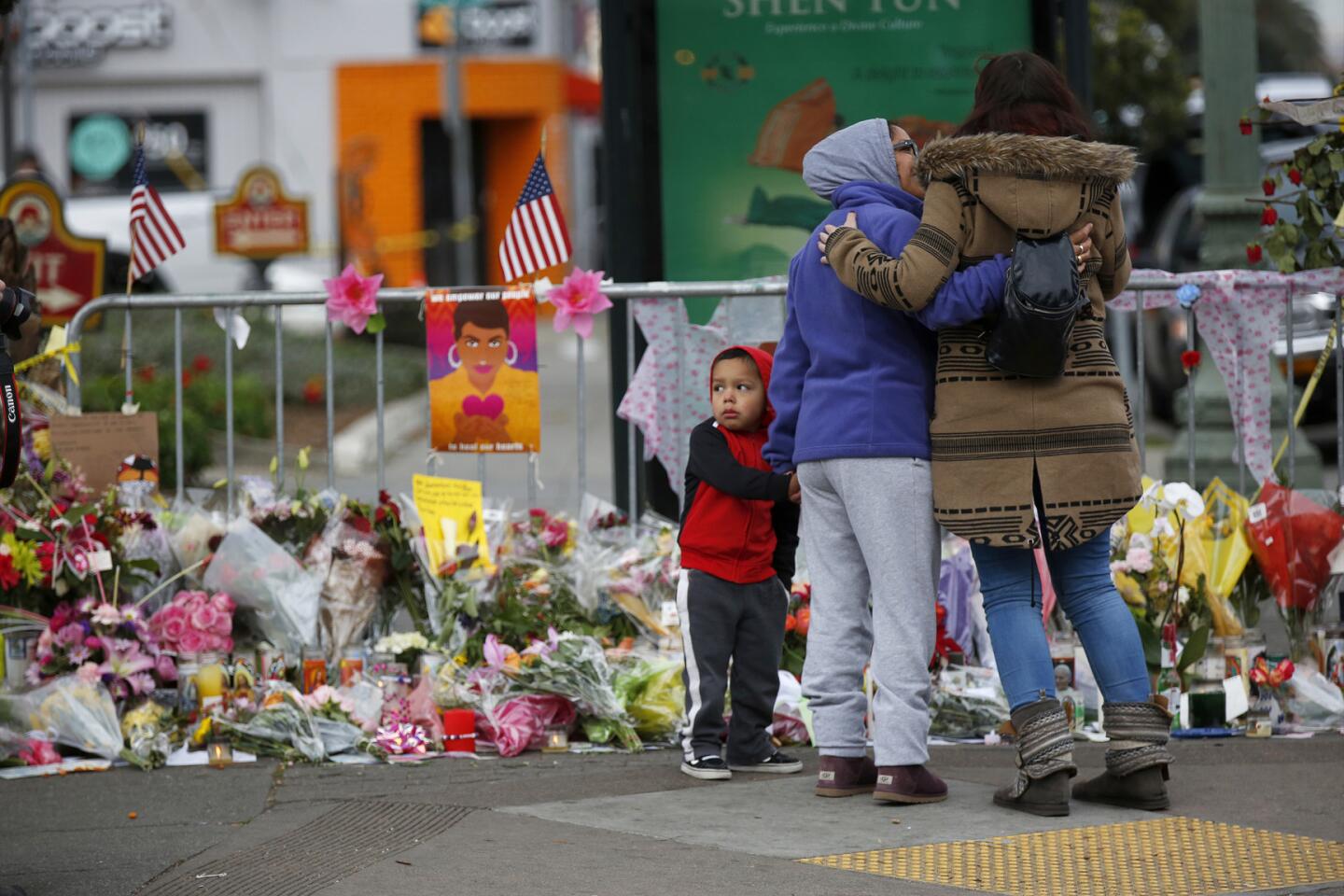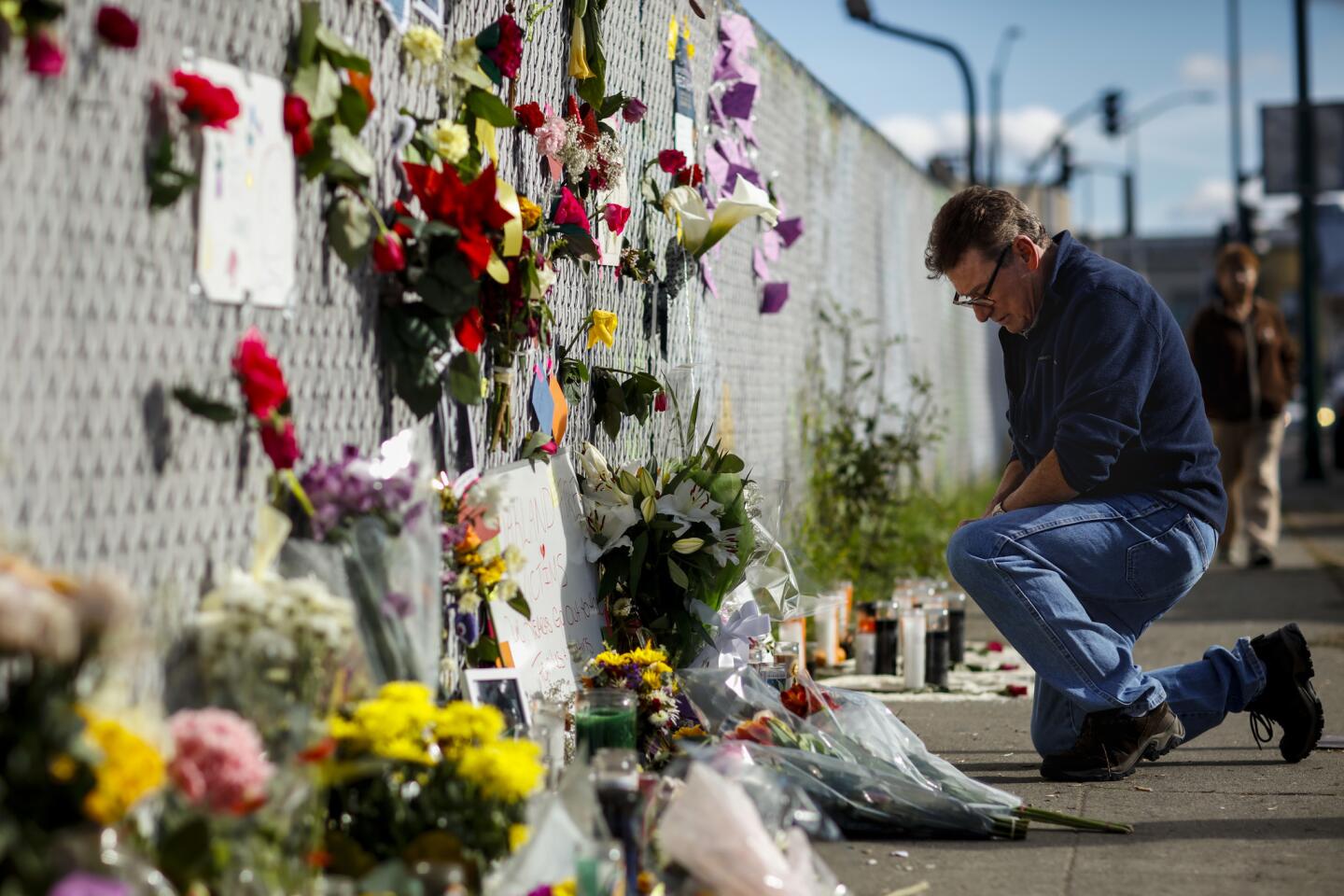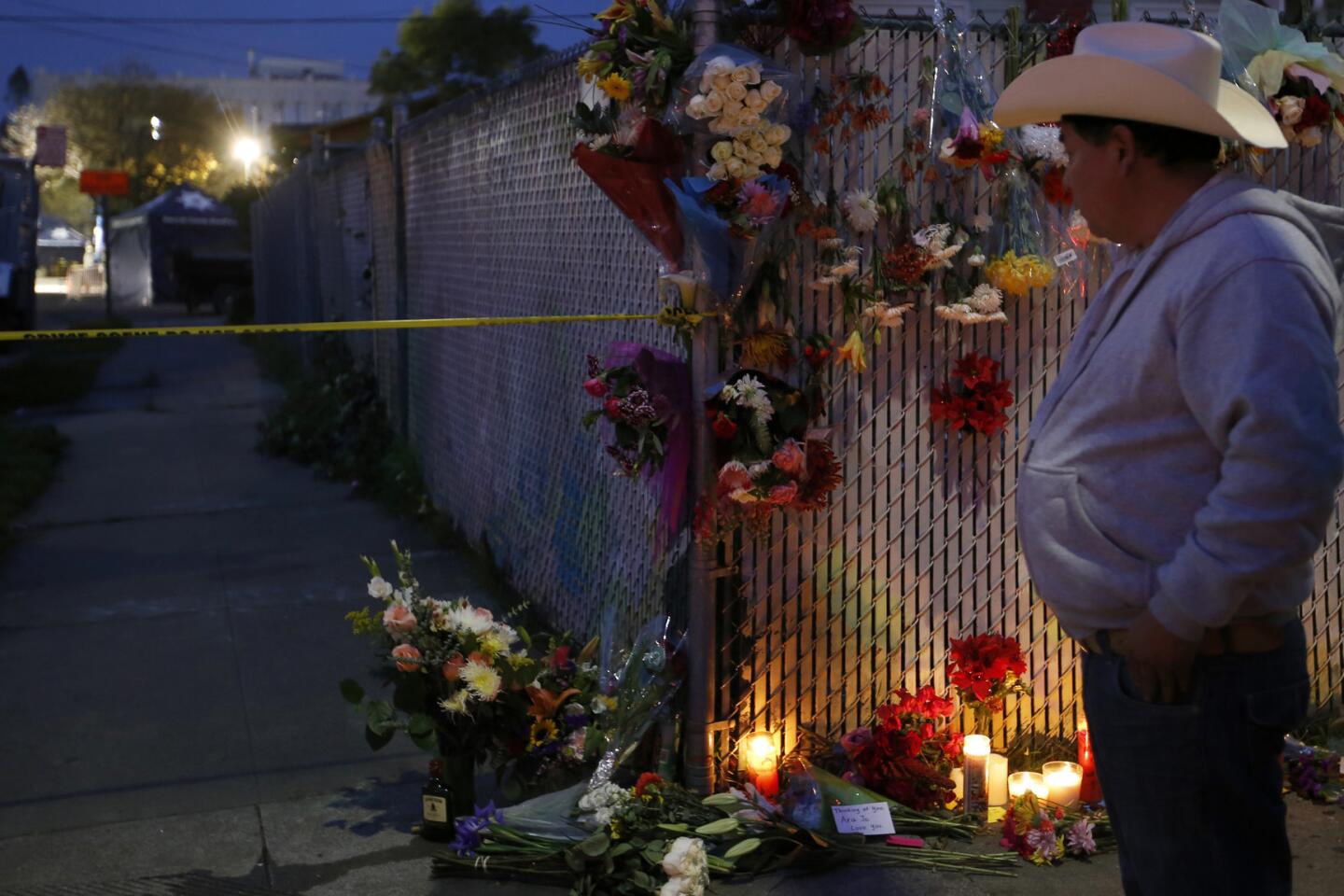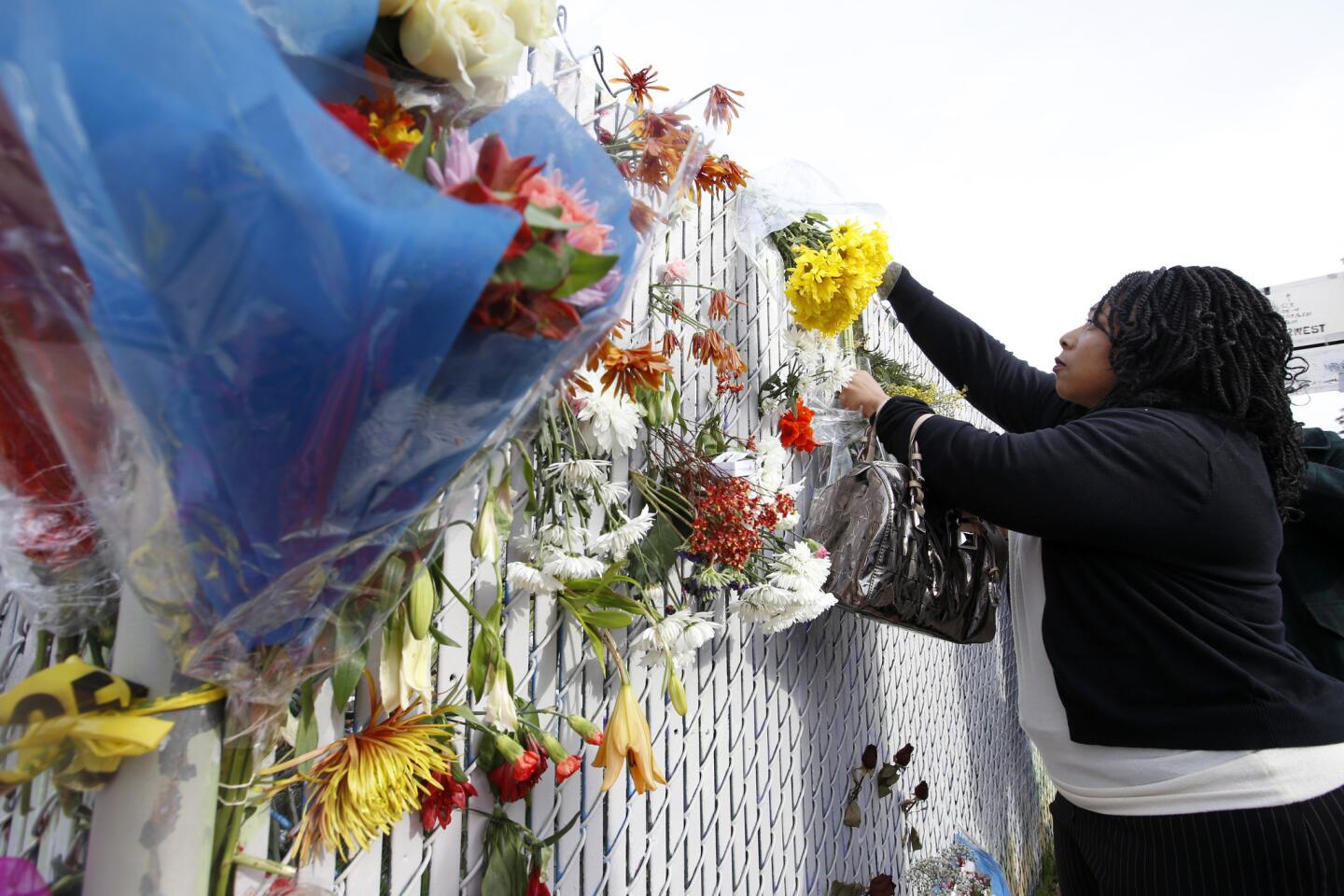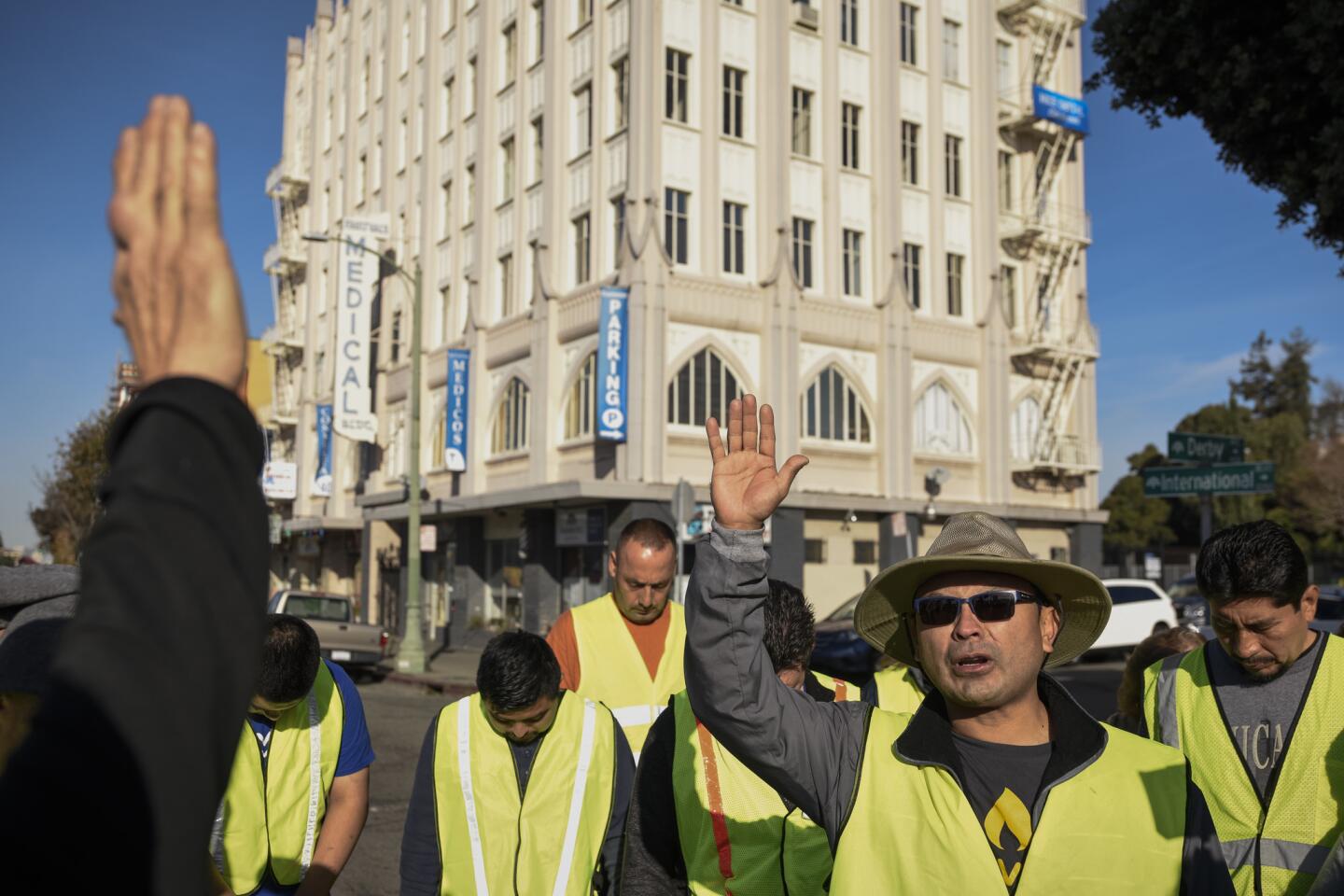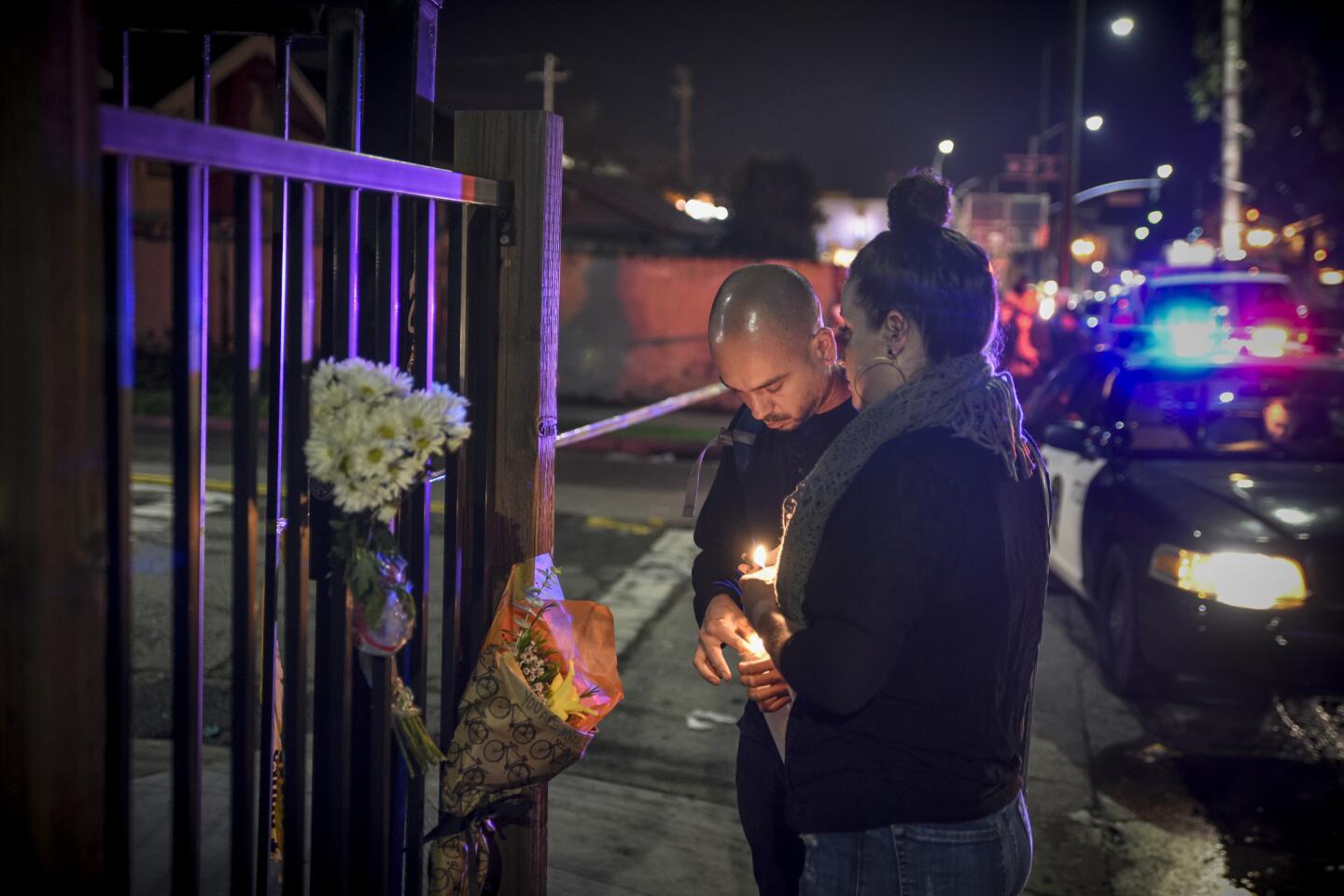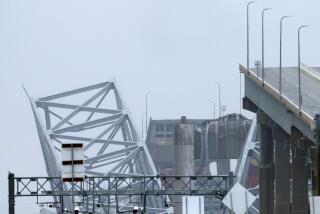‘It’s excruciating’: Inside the heartbreaking recovery of 36 bodies in Oakland warehouse

The city’s planning and building department only goes into buildings when the owner seeks a permit or if officials receive a complaint.
For four days, they sifted through despair.
The fire that climbed walls and felled a roof had left a sprawling Oakland warehouse blanketed in charred debris. Among the ashes lay an unknown number of bodies. The expertise of two doctors who had combed through wreckage after 9/11 would help.
What they found would test the resolve of the searchers. The remains of high school sweethearts cradling each other. The teenage boy who turned out to be the son of a local sheriff’s deputy.
Officials had to ask family members and friends to gather items that would help with DNA identification of the missing: a hairbrush, an article of clothing, an old toothbrush.
Meanwhile, authorities fielded hundreds of missing persons reports — some from parents who had not seen their children for a while but thought they might be in Oakland — as well as pleas from desperate callers.
The bleak undertaking wound down Wednesday after cadaver dogs helped with one last sweep of the ruins. Authorities announced the search for bodies at the Ghost Ship had come to a close. The final number of victims: 36.
“It’s excruciating to walk through and to possibly relive those last moments when persons knew there was a fire and there was no way out,” said Mark Pazin, chief of law enforcement for the Governor’s Office of Emergency Services.
The searchers worked 12-hour shifts. They tried to operate around the clock but had to stop periodically because of structural concerns about the building. Officials said it was important that the search be done both methodically and respectfully, to preserve evidence for investigators while keeping in mind the grief of the families waiting for answers. All the while, there was concern that some searchers could be hurt by falling debris and collapsing structures.
Some workers collected evidence in the warehouse that was examined outside.
“It was quiet. It was heartbreaking,” Melinda Drayton, an Oakland Fire Department battalion chief, told reporters during one of the news conferences in front of the warehouse.
As the recovery effort continued, deputies sat down with victims’ family members, many of whom shared mementos, photos and memories.
“They wanted us to know who we were dealing with,” Alameda County Sheriff’s Sgt. Ray Kelly said.
Others showed text messages they had received from those trapped by the flames. Many were simple: “I love you.” Some, harrowing: “I am going to die,” one victim wrote to her mother.
With recovery efforts now over, authorities have focused on the cause of the devastation.
Officials have said they are examining possible electrical problems with a refrigerator and other appliances, although they stressed they have not made any final determinations and that it could take several weeks to find an answer.
A small area along a back wall of the building is believed to be the fire’s point of origin.
The blaze appears to have started on the first floor, said Jill A. Snyder, special agent in charge of the U.S. Bureau of Alcohol, Tobacco, Firearms and Explosives in San Francisco. The victims were trapped and overtaken by smoke that traveled up internal stairwells.
“The fire was well-developed by the time second-floor occupants realized there was a fire going on the first floor,” she said. The building had two internal staircases connecting the top and bottom floors, but no fire exits to the outside from the second floor.
Investigators determined the warehouse was not equipped with fire alarms or a fire suppression system, Snyder said. They also still need to determine the layout of the gutted building.
Former residents of the warehouse have described it as a serious fire danger, littered with trash and old furniture and lacking fire sprinklers. Photos from inside the building taken before the fire show a maze of electrical wires as well as a heating system that appeared to be hooked up to portable propane generators.

City officials said it was zoned for use as a warehouse, not for housing or as a concert venue.
Jean M. Daly, a former arson prosecutor in Los Angeles and San Francisco who specializes in fire cases, said fire investigators study a flame’s burn patterns and intensity.
“The heavier the damage, the longer the burn, the more likely it is the area of origin,” Daly said. She added that wiring and appliances believed to be involved would undergo microscopic lab examinations.
The age of the warehouse’s wiring will also be an issue, said Robert Rowe, a former Downey Fire Department marshal.
“Back when this was a warehouse, its electrical system was designed for a particular purpose,” he said. “But modern equipment, laptops, chargers, sound systems, air conditioners and fridges place a very different burden on the system.”
The fire has raised concerns about nonpermitted dwellings throughout the city. Oakland officials have begun releasing administrative records concerning the building known as the Ghost Ship, which was the focus of nearly two dozen building code complaints or other city actions over the past 30 years.
At least three of the complaints appeared to assert that structures had been built inside the warehouse without permits or that the property was being used as a residence. Others cited illegal parking and mounds of debris piled up on the sidewalk and in an adjoining vacant lot.
An inspector who visited the warehouse 15 days before the fire to investigate a possible “illegal interior building structure” was unable to get inside.
According to Oakland Mayor Libby Schaaf, the city followed up by sending a request to the warehouse owner to gain entry. City Planning and Building Department reports released Wednesday, however, indicate only that the city sent a violation notice demanding debris outside the building be cleaned up.
Schaaf said the city eventually would release records of all violations and other actions related to the warehouse, documents requested by numerous news outlets under California’s public records laws.
By Wednesday afternoon, the Ghost Ship had nearly emptied.
Fire crews folded up ladders and placed shovels on the back of a vehicle. Tents stationed in front of the building for days were disassembled. TV news cameras disappeared. Oakland fire trucks backed out of the site and drove away.
Times staff writers Soumya Karlamangla, Javier Panzar and Paige St. John in Oakland and Joseph Serna, Hailey Branson-Potts and Matt Hamilton in Los Angeles contributed to this report.
ALSO
Oakland fire: How civil and criminal cases might play out
Nearly two dozen complaints had been filed against site of deadly Oakland fire, records show
Suspects in catastrophic Oakland fire: Refrigerators, old wiring, overtaxed electrical system
More to Read
Start your day right
Sign up for Essential California for news, features and recommendations from the L.A. Times and beyond in your inbox six days a week.
You may occasionally receive promotional content from the Los Angeles Times.
